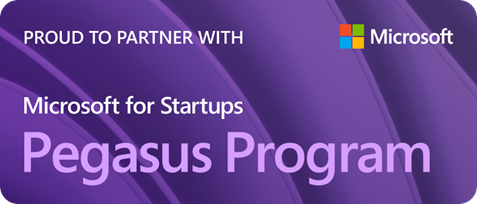Why Top-Down Oversight and Bottom-Up Autonomy Are Critical for Product Security Programs
In today’s fast-paced DevOps-style software delivery, organizations face increasing pressure to develop secure software without sacrificing speed or innovation. A successful product security program requires more than just tools and scanners; it needs a comprehensive approach that bridges the gap between top-down oversight and bottom-up autonomy. This balance is crucial for organizations aiming to build secure, resilient software while fostering a productive, empowered workforce.

Bridging the Top-Down and Bottom-Up Divide
At the core of any effective product security program is the ability to combine leadership’s strategic goals with developers' day-to-day operations.
- Top-Down Oversight provides the structure, ensuring that all teams align with the company’s broader security policies and standards. Leadership can set priorities, monitor risks, and maintain compliance across the organization.
- Bottom-Up Autonomy is about enabling developers to work efficiently while embedding security into their development workflow. Security should be integrated into the developer's IDE experience, empowering them to handle risks as they arise without slowing down the development process.
Our hybrid approach at Start Left® Security ensures that while developers can maintain their velocity and innovate freely, leadership has the necessary oversight to guide the program in the right direction. By embedding security hooks directly into the SDLC (Software Development Life Cycle) and CI/CD (Continuous Integration/Continuous Deployment) pipelines, developers can manage risks without straying from the organization’s security goals.
Enhancing Visibility and Reducing Noise
One of the most significant challenges in modern security programs is visibility. Often, security processes are invisible to leadership and overly disruptive to developers. Many security tools push unfiltered alerts straight to the developer’s environment, resulting in noise and frustration.
- Why IDE-Only Falls Short: When security is integrated only at the IDE level without adequate oversight, critical processes are overlooked. Developers become overwhelmed with alerts, many of which may not even be actionable or relevant. This creates a breakdown in security effectiveness, as important vulnerabilities may get lost in the noise.
- The Start Left® Solution: We reduce noise by incorporating validation and triage before alerts reach the developer’s IDE. This ensures that only relevant, actionable insights make it to the team, keeping their workflow smooth and focused. By prioritizing the most critical vulnerabilities, teams can manage risks without becoming bogged down in endless alerts and false positives.
Empowering Developers and Leadership Alike
For a product security program to succeed, both leadership and developers need to be empowered.
- Top-Down Insights: Leadership needs visibility into program performance. They require actionable insights that help them understand where risks are emerging, how teams are performing, and what actions need to be taken—without being overwhelmed with technical details.
- Bottom-Up Empowerment: Developers need security information that is easy to act on. Instead of lengthy reports or endless alerts, they require targeted, contextual information that allows them to address vulnerabilities efficiently while keeping their workflow intact.
By balancing oversight with autonomy, Start Left® Security allows leadership to drive strategy without micromanaging, while developers can focus on creating secure products without being bogged down by unnecessary tasks.
The Importance of a Unified Approach
The future of product security lies in unifying top-down and bottom-up models. Organizations that try to focus on only one approach—whether it's leadership control or developer freedom—often fall short in their security goals. DevSecOps culture is not just a goal; it’s an outcome that must be fostered through both oversight and empowerment.
With our approach, Start Left® turns that vision into a reality. We provide leadership with the tools to monitor program success, while empowering developers with security tools embedded directly into their workflow. This hybrid approach results in a more integrated, effective security posture that benefits the entire organization.
Conclusion: The Key to Success in Product Security
Building a successful product security program means going beyond traditional tools and methodologies. Top-down oversight ensures that leadership can guide the program strategically, while bottom-up autonomy gives developers the freedom and responsibility to embed security into their everyday work.
By unifying these models, Start Left® Security helps organizations meet the challenges of modern software development while ensuring that security is built into every product—without slowing down innovation. The result is a secure, resilient software product, backed by a program that aligns both leadership objectives and developer efficiency.
SHARE!
More Resources















